

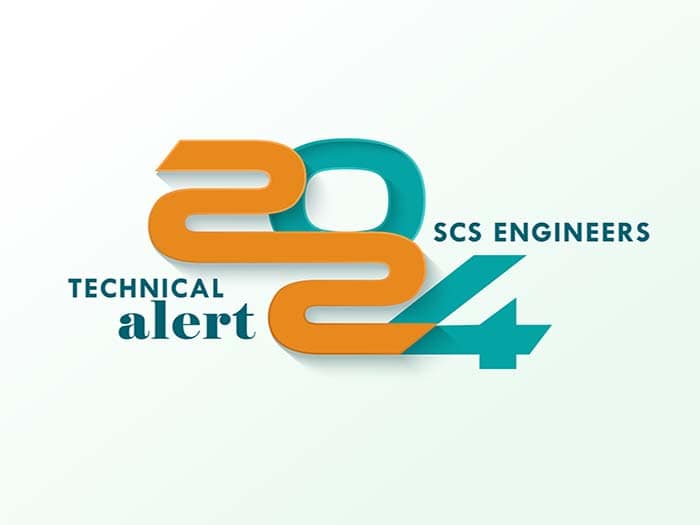
On April 10, the Federal Administration issued the first-ever national, legally enforceable drinking water standard to protect communities from exposure to harmful per-and polyfluoroalkyl substances (PFAS), also known as ‘forever chemicals.’ Exposure to PFAS has been linked to deadly cancers, impacts to the liver and heart, and immune and developmental damage to infants and children. This final rule represents the most significant step to protect public health under EPA’s PFAS Strategic Roadmap.
EPA is also making funding available to help ensure that all people have clean and safe water. In addition to today’s final rule, EPA is announcing nearly $1 billion in newly available funding to help states and territories implement PFAS testing and treatment at public water systems and to help owners of private wells address PFAS contamination. This is part of a $9 billion investment through the Bipartisan Infrastructure Law to help communities with water impacted by PFAS and other emerging contaminants – the largest-ever investment in tackling PFAS pollution. An additional $12 billion is available through the Bipartisan Infrastructure Law for general drinking water improvements, including addressing emerging contaminants like PFAS.
The enforceable drinking water PFAS regulations are finalized today and posted here. EPA PFAS regulations under the Safe Water Drinking Act page.
EPA finalized a National Primary Drinking Water Regulation (NPDWR) establishing legally enforceable levels, called Maximum Contaminant Levels (MCLs), for six PFAS in drinking water. PFOA, PFOS, PFHxS, PFNA, and HFPO-DA as contaminants with individual MCLs, and PFAS mixtures containing at least two or more of PFHxS, PFNA, HFPO-DA, and PFBS using a Hazard Index MCL to account for the combined and co-occurring levels of these PFAS in drinking water. EPA also finalized health-based, non-enforceable Maximum Contaminant Level Goals (MCLGs) for these PFAS.

The final rule requires:
EPA estimates that between about 6% and 10% of the 66,000 public water systems subject to this rule may have to take action to reduce PFAS to meet these new standards. All public water systems have three years to complete their initial monitoring for these chemicals. They must inform the public of the level of PFAS measured in their drinking water. Where PFAS is found at levels that exceed these standards, systems must implement solutions to reduce PFAS in their drinking water within five years.
The new limits in this rule are achievable using a range of available technologies and approaches including granular activated carbon, reverse osmosis, and ion exchange systems. Drinking water systems will have flexibility to determine the best solution for their community and essential services that require wastewater treatment.
Additional Resources:

To a wastewater treatment engineer, at least during workdays, it seems like everyone is talking about forever chemicals, all of the time. There’s a good reason for that, because the huge group of man-made chemicals has climbed in priority to be at the top of most wastewater treatment regulatory considerations. Forever chemicals are also known as per and polyfluoroalkyl substances (PFAS) and have rapidly become the latest of the emerging contaminants in drinking water to be treated. So, while there is still a lot of toxicology research to do, PFAS destruction and even which PFAS actually needs to be addressed, there is very little doubt regarding the future need to treat PFAS in landfill leachate and other wastewaters. Everyone is in agreement, the environment needs to be protected from forever chemicals.
PFAS chemicals can withstand high heat without becoming unstable as well as repelling oil and water, making them ideal for inclusion in fire-fighting foam, lining non-stick pans, or water resistant clothing. But unfortunately, PFAS can persist in the environment – water, fish, humans, etc. – for a long time. So, having efficient and cost-effective methods of treating wastewater, drinking water, bio-solids, etc., to reduce/remove PFAS is becoming increasingly important. Luckily, some traditional and very available treatment methods are effective at treating PFAS as well as some newer, non-traditional treatment methods that appear to be promising.
One effective management technology is using deep injection wells to store the PFAS contaminated wastewater deep, far below drinking water sources and within high total dissolved solids groundwater. Deep injection wells are only allowed where the deep geology and subsurface conditions can allow for the PFAS wastewater to be contained where it is injected.
Additional management options are granular activated carbon (GAC) or ion exchange (IX), which are adsorption treatment methods that use a media, through which the PFAS contaminated wastewater can pass, and the charged PFAS molecules become bound up in the opposite charged GAC or IX media.
Reverse osmosis (RO) and foam fractionation (FF) treatment methods use separation, either through very small pores in a membrane (RO) or applying aeration to create a PFAS concentrated foam (FF), to allow the treated, cleaner water to discharge the treatment process and the concentrate (RO) or foamate (FF) is left and can be dealt with more efficiently, because after treatment the concentrate/foamate is a much smaller volume than the original wastewater flow.
These PFAS management methods simply move the PFAS chemicals out of the way and don’t actually destroy the PFAS. PFAS destruction generally requires more effort and cost because high pressure and/or high heat are required to break the carbon – fluorine (C-F) bonds. A regenerative thermal oxidizer (RTO) or supercritical water oxidation (SCWO) are PFAS destruction methods that can be employed. An RTO typically operates at high temperature (e.g., 1,800 F) and SCWO utilizes both high temperature (>705 F) and high pressure (>3,210 psi) within a process to, again, break the C-F bonds. Electrocoagulation, advanced oxidation processes and plasma are also treatment methods that could be employed to destroy PFAS.
These are just a few of the many PFAS management and destruction options. It can be hard to decide what’s right for your project. That’s where SCS can help. We’re technology agnostic – so you can trust our recommendations are appropriate for your project and goals. Contact us today to learn more about what’s possible.
 About the Author: Sam Cooke, PE, CEM, MBA, is a Vice President and our expert on Industrial Wastewater Pretreatment. He has nearly three decades of professional and project management experience in engineering with a concentration in environmental and energy engineering. Mr. Cooke works within SCS’s Liquids Management initiative to provide services to our clients nationwide.
About the Author: Sam Cooke, PE, CEM, MBA, is a Vice President and our expert on Industrial Wastewater Pretreatment. He has nearly three decades of professional and project management experience in engineering with a concentration in environmental and energy engineering. Mr. Cooke works within SCS’s Liquids Management initiative to provide services to our clients nationwide.
Additional PFAS Management and Treatment Resources:
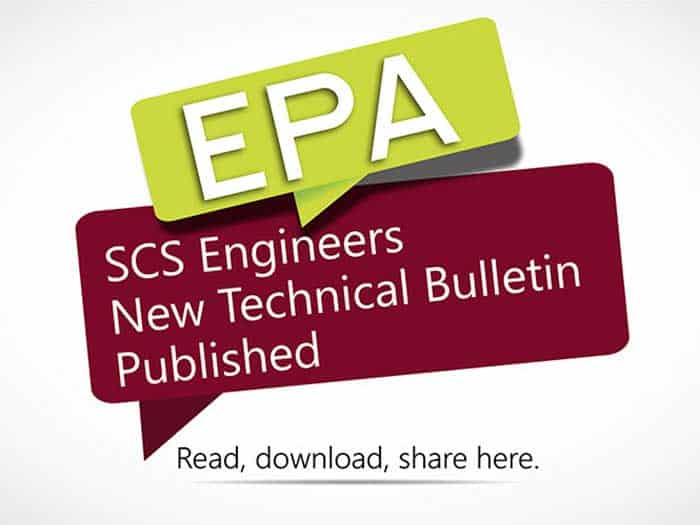
As you may recall, in September 2022, EPA issued a proposed rule to designate two per- and polyfluoroalkyl substances (PFAS) — perfluorooctanoic acid (PFOA) and perfluorooctanesulfonic acid (PFOS), and their salts and structural isomers — as hazardous substances under the Comprehensive Environmental Response, Compensation, and Liability Act (CERCLA), also known as “Superfund.” EPA is currently reviewing comments received on this proposed rule.
On April 13, 2023, EPA issued an Advance Notice of Proposed Rulemaking (ANPRM) asking the public for input regarding potential future hazardous substance designations of additional PFAS substances under CERCLA. The ANPRM includes:
The ANPRM announcement in the Federal Register is available at: https://www.govinfo.gov/content/pkg/FR-2023-04-13/pdf/2023-07535.pdf
More solutions and information at Liquids Management.
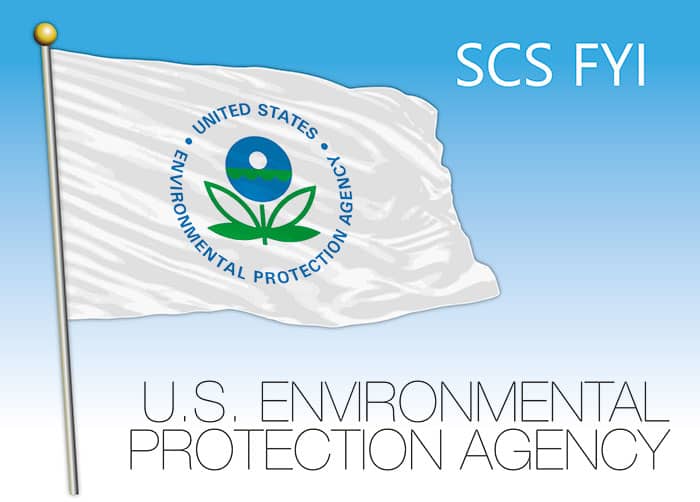
On December 5, 2022, the EPA released a memo providing direction under the NPDES permitting program to empower states to address known or suspected discharges of per- and polyfluoroalkyl substances (PFAS). Note that the list of Applicable Industrial Direct Discharges (page 2, paragraph A.1) includes landfills. The memo cites state programs in Michigan and North Carolina that other states may want to replicate. These approaches and others could help reduce PFAS discharges by working with industries, and the monitoring information they collect, to develop facility-specific, technology-based effluent limits.
As stated in its memo, the EPA’s goal is to align wastewater and stormwater NPDES permits and pretreatment program implementation activities with the goals in EPA’s PFAS Strategic Roadmap. The memo recommends that states use the most current sampling and analysis methods in their NPDES programs to identify known or suspected sources of PFAS and to take actions using their pretreatment and permitting authorities, such as imposing technology-based limits on sources of PFAS discharges.
The Agency hopes to obtain comprehensive information by monitoring the sources and quantities of PFAS discharges, informing other EPA efforts to address PFAS. The EPA will need this information since new technologies and treatments are in development but remain unproven to work successfully in specific industries.
Other proposed actions by the Agency include designating two PFAS as Comprehensive Environmental Response, Compensation, and Liability Act (CERCLA) hazardous substances and an order under EPA’s National PFAS Testing Strategy requiring companies to conduct PFAS testing and nationwide sampling for 29 PFAS in drinking water starting in 2023.
In a letter to Congress, SWANA and NWRA associations request that regulation under CERCLA for addressing PFAS contamination assign environmental cleanup liability to the industries that created the pollution in the first place. Both associations note that landfills and solid waste management, an essential public service, do not manufacture nor use PFAS. Therefore, the general public should not be burdened with CERCLA liability and costs associated with mitigating PFAS from groundwater, stormwater, and wastewater.
Resources:

On December 5, 2022, the EPA released a memo providing direction under the NPDES permitting program to empower states to address known or suspected discharges of per- and polyfluoroalkyl substances (PFAS). The memo cites state programs in Michigan and North Carolina that other states may want to replicate. These approaches and others could help reduce PFAS discharges by working with industries, and the monitoring information they collect, to develop facility-specific, technology-based effluent limits.
As stated in its memo, the EPA’s goal is to align wastewater and stormwater NPDES permits and pretreatment program implementation activities with the goals in EPA’s PFAS Strategic Roadmap. The memo recommends that states use the most current sampling and analysis methods in their NPDES programs to identify known or suspected sources of PFAS and to take actions using their pretreatment and permitting authorities, such as imposing technology-based limits on sources of PFAS discharges.
The Agency hopes to obtain comprehensive information by monitoring the sources and quantities of PFAS discharges, informing other EPA efforts to address PFAS. The EPA will need this information since new technologies and treatments are in development but remain unproven to work successfully in specific industries.
Other proposed actions by the Agency include designating two PFAS as Comprehensive Environmental Response, Compensation, and Liability Act (CERCLA) hazardous substances and an order under EPA’s National PFAS Testing Strategy requiring companies to conduct PFAS testing and nationwide sampling for 29 PFAS in drinking water starting in 2023.
In a letter to Congress, SWANA and NWRA associations request that regulation under CERCLA for addressing PFAS contamination assign environmental cleanup liability to the industries that created the pollution in the first place. Both associations note that landfills and solid waste management, an essential public service, do not manufacture nor use PFAS. Therefore, the general public should not be burdened with CERCLA liability and costs associated with mitigating PFAS from groundwater, stormwater, and wastewater.
Resources:

Since the 1990s, USEPA has provided risk-based Regional Screening Levels (RSLs) to assist in evaluating environmental monitoring and contaminant levels – e.g., in soil, air, and water at residential and industrial properties. EPA periodically updates the RSL tables to reflect new contaminants of concern and new chemical toxicity data. The May 2022 RSL tables have been expanded to include 14 per- and polyfluoroalkyl substances (PFAS). PFAS are a large family of emerging contaminants that are garnering significant interest due to their significant toxicity and widespread use in industrial and consumer products such as fire-fighting foam, fabric treatment, and some food packaging. The latest EPA RSL tables are available at: https://www.epa.gov/risk/regional-screening-levels-rsls-generic-tables
Additional info regarding ongoing efforts to address and treat PFAS are available by searching this website: https://www.scsengineers.com/ and then using the filter to narrow down returns to your interests.

Regulatory movement around PFAS is picking up; this year and next could be monumental around managing these toxic compounds in landfills and leachate. Operators should look out for proposed U.S. Environmental Protection Agency (EPA) rules in 2022 and final rules in 2023. Most notably, two PFAS categories, PFOA and PFOS, could be classified as hazardous wastes under the Resource Conservation and Recovery Act (RCRA) and the Comprehensive Environmental Response, Compensation, and Liability Act (CERCLA), aka Superfund. Also, expect rules on monitoring and limiting PFAS in drinking water.
Amidst this regulatory activity, PFAS treatment research advances, which will be critical to landfill operators when they are charged with managing this very challenging stream. With existing options, it’s near impossible to destroy these “forever chemicals,” known for their carbon-fluorine bond, considered one of the strongest in nature.
SCS Engineers’ Gomathy Radhakrishna Iyer advises operators on what to look for to brace for regulatory change and advises them on their best defense—the treatment piece. She explains current options and potential technology breakthroughs on the horizon.
“On the legislative front, standardized guidance might not happen overnight. There’s much to learn, as leachate is not the same, including as it pertains to PFAS. Concentrations and compounds vary. So, EPA is gathering data and knowledge to inform policy and mitigation options moving forward,” Iyer says.
Today’s focus entails developing and validating methods to detect and measure PFAS in the environment. The EPA is evaluating technologies to reduce it and is trying to understand better the fate and transport of PFAS in landfills (including landfill gas, leachate, and waste).
While PFAS concentrations in leachate sent to publicly owned treatment plants (POTW) are unknown, the EPA 2023 rule aims to fill in the missing pieces. What is learned and subsequent decisions will be critical to landfill operators who depend on POTWs as a final destination for leachate and at a time when POTWs meet stringent guidelines on what they can accept. The EPA’s focus will begin with guidance on monitoring and reporting figures, including a list of PFAS to watch for in 2022.
In the meantime, the agency published interim guidance on destroying and disposing of PFAS, which it plans to update in fall 2023. The interim guidance identifies the information gap with regard to PFAS testing and monitoring, reiterating the need for further research to address the FY20 National Defense Authorization Act NDAA requirements. Operators can also look to SWANA treatment guidelines to help prepare for new rules.
Get ahead of the game by doing your homework on treatments, Iyer advises. POTWs have discharge limits, and once PFAS in leachate is weighed in with the existing constituent limits on permits, ensuring a disposal destination will call for proactive measures.
The discussion on treatments will be important. Iyer advises on staying up with expectations that may be in the pipeline, beginning by focusing on today’s commercially available options:
Comparing these methods, Iyer says, “Biological treatments work better simply as a pretreatment method, removing PFAS to some extent. Their performance may also only apply to non-biodegradable organic matter. Considering these limitations, the alternative of physical-chemical treatments is most often recommended by industry experts; they appear to be more effective as supported by data,” Iyer says.
Her preference is RO, the membrane-enabled separation process, which many treatment plants already use, or are considering, to remediate other constituents. “Because we know RO to be effective with other contaminants and PFAS, I think it’s a great gainer, especially if plants already use this method to treat leachate for other contaminants successfully,” she says.
RO requires relatively little operational expertise, while other physical-chemical methods, such as GAC and ion exchange, require some chemistry knowledge.
“With granular activated carbon and ion exchange, resins attach to contaminants in leachate. These approaches require pretreatment for organics removal, process understanding, and operator involvement. Conversely, with RO, you learn a fairly straightforward process and move through the steps,” she says.
But while physical-chemical treatments are the best readily available options today, each has limitations. RO leaves a residue requiring further treatment; then, the material is typically recirculated in landfills as a slurry or hauled to a POTW, meaning there is no guarantee they will not need to be addressed later. Other methods, such as GAC, are more energy-intensive and have limited sorbent capacity. Ion exchange, in particular, has difficulty removing short-chain PFAS, which persist in the environment.
When the time comes that PFAS have stringent discharge limit requirements, no one of these technologies may work as a standalone, so the search is on for more robust systems.
Several new treatments are under research; unlike their predecessors, they appear to break the chemical bond.
Iyer shares her take on each option:
“I’m especially interested in seeing how plasma treatment works in the real world versus the lab. The building costs can be higher, and leveraging electricity to break the bond is expensive. But the maintenance should be easy and relatively inexpensive compared to other technologies. It will be interesting to see how economical it would be for landfills over the long run.”
There is more to learn about each of these new technologies. Researchers are working to identify the adsorbents that best suit PFAS compound removal, whether short or long chains. With photocatalytic reaction, a research direction is exploring combining UV rays, a catalyst, and an oxidant to degrade PFAS.
“We know that the absorption options and photocatalytic concepts work well on strong contaminants,” Iyer says. She moves on to her thoughts on thermal treatment. She wants to know more about this particular option before weighing in. “I’m not sure how feasible this method will be for the operators. PFAS get destroyed at a temperature greater than 1,000 degrees Celsius. But for high quantities of leachate, this option could be expensive.”
Most EPA-funded research is based on these developing treatment processes. But there is plenty to evaluate to identify the best solutions in a given scenario. With that understanding, the agency is trying to understand the types and volumes of PFAS generated, how they change or degrade as they enter landfills, and where they originate. EPA is building a database to track this information to consider key characteristics of individual PFAS to help guide forthcoming guidance on treatments.
In the meantime, Iyer advises operators to pay close attention to evolving developments and communications from EPA.
We recently saw the memorandum from EPA on addressing PFAS discharges in EPA-issued NPDES permits. We will look for guidance to the state permitting authorities to address PFAS in NPDES permits soon and more information from the EPA’s roadmap.
At SCS, we use our time to learn about technologies, including what’s still under investigation and explore what seems to work. In addition, watch for guidance documents, not just from EPA but from research organizations such as EREF and universities. Do your due diligence and keep your eyes and ears open for EPA and your state regulatory authority announcements. Staying informed is the best strategy for landfill operators at this point.
Liquids and wastewater management resources.

SWANA is optimistic regarding the positive role modern MSW landfills can play in managing solid waste – such as carpeting and clothing – containing PFAS. By disposing of these products in landfills and effectively treating landfill leachate for PFAS removal, the solid waste industry can provide society with an effective and proven method of managing PFAS wastes.
In support of members, the SWANA Applied Research Foundation (ARF) has issued a report summarizing and analyzing management options and treatment technologies that can address PFAS chemicals contained in landfill leachate on November 10, 2021. PFAS Management and Treatment Options for Landfill Leachate is available to SWANA ARF subscribers.
The research findings presented in the resulting report are based on a comprehensive review of the literature and an analysis of the commercially-available PFAS treatment systems and other management options for landfill leachate.
The new report serves as a companion report to one published by the ARF in June 2021 on PFAS Fate and Transport in WTE Facilities, available in SWANA’s Reports List.
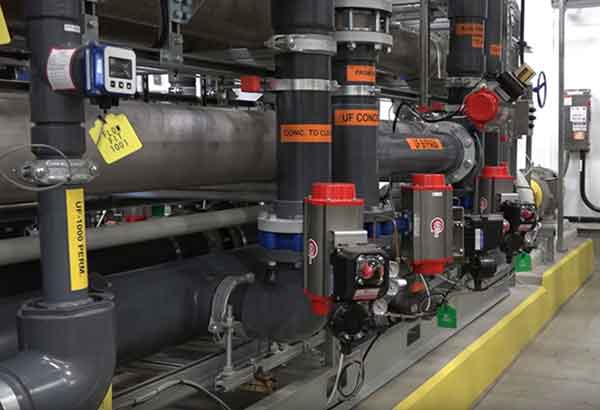
Across the industry, stakeholders agree the next few years will be critical in shaping how landfills deal with PFAS and how the public perceives it. Waste trade associations, scientists, and a host of organizations are in the midst of conducting a number of studies looking closely at the issue, PFAS treatment options, the positive impact of recycling, and regulatory policies.
While there are sites noted in the article, there’s no practical way for most companies and landfills to respond at this time responsibly. Additionally, landfills are unique; no two are alike. Most human exposure to PFAS occurs through contaminated food. The majority of landfill leachate is pre-treated at the landfill before going to a wastewater treatment plant, where additional treatment occurs before discharge.
According to EREF President Dr. Bryan Staley, in the article, “The relative impact of leachate as a human exposure pathway needs further evaluation to understand its relative degree of importance as it relates to health implications.”
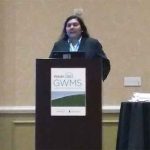
Dr. Gomathy Radhakrishna Iyer, landfill leachate and design expert for SCS Engineers, said some operators are waiting to see what regulations may come even as they work on accounting for potential compliance issues and seeking solutions. “When the clients are thinking of upgrading their treatment plans, some are definitely taking into consideration PFAS treatment,” Radhakrishna Iyer said.
“You’re spending millions of dollars, you need to do your due diligence, right? At this point, consideration should be given to PFAS treatment during the feasibility stages,” she said.

Complementing the Interstate Technology and Regulatory Council’s – ITRC, PFAS Technical and Regulatory Guidance, the website now has ITRC Per- and Polyfluoroalkyl Substances – PFAS, and Risk Communication Fact Sheets available. The site and updated content replace older fact sheets with more detailed information and useful for those who wish to understand the discovery and manufacturing of PFAS, information about emerging health and environmental concerns, and PFAS releases to the environment with naming conventions and federal and state regulatory programs.
SCS Engineers’ professionals recommend further reading to understand specific chemicals or subgroups of chemicals under study to comprehend PFAA behavior in the environment. There are appropriate tools to develop a site-specific sampling and analysis program and considerations for site characterizations following a PFAS release.
We combine ITRC resources and our own to compile an updated library that we hope you find helpful. You can always contact one of our local Liquids Management or Landfill professionals too.
PFAS Behavior in the Environment
PFAS Concerns
PFAS Evaluations
PFAS Remediation
The Interstate Technology and Regulatory Council (ITRC) is a state-led coalition working to reduce barriers to the use of innovative air, water, waste, and remediation environmental technologies and processes. ITRC documents and training can support quality regulatory decision making while protecting human health and the environment. ITRC has public and private sector members from all 50 states and the District of Columbia and is a program of the Environmental Research Institute of the States (ERIS), a 501(c)(3) organization incorporated in the District of Columbia and managed by the Environmental Council of the States (ECOS).
ITRC Goals
SCS Engineers